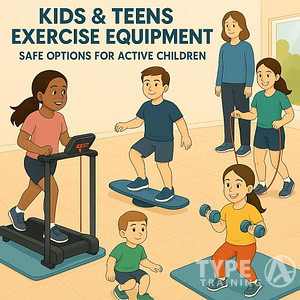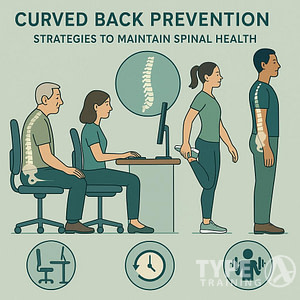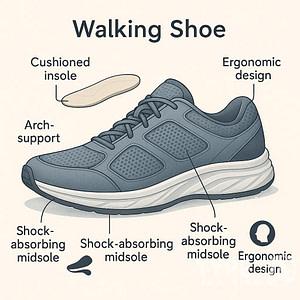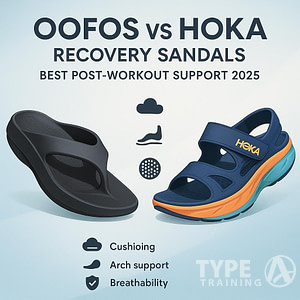Stroke is a severe medical condition that can have devastating consequences on a person’s life. It is a leading cause of long-term disability and can affect people of all ages, but seniors are at a higher risk of experiencing a stroke. Fortunately, exercise has been shown to be an effective way to improve the recovery process for stroke survivors and reduce the risk of future strokes.
Exercise is a critical component of stroke rehabilitation, and it plays a crucial role in helping seniors regain their strength, mobility, and independence. Physical activities can help improve muscle strength and coordination throughout the body, including muscles used for balance, walking, and even swallowing. Exercise can also reduce the risk of falls, which is a common concern for seniors who have suffered a stroke. However, it is essential to understand the different types of exercises that are suitable for stroke survivors and the safety precautions that must be taken to avoid any complications.
Key Takeaways
- Exercise is an effective way to improve the recovery process for stroke survivors and reduce the risk of future strokes.
- Physical activities can help improve muscle strength and coordination throughout the body, including muscles used for balance, walking, and even swallowing.
- It is essential to understand the different types of exercises that are suitable for stroke survivors and the safety precautions that must be taken to avoid any complications.
Understanding Stroke and Exercise for Seniors
source: https://www.health.harvard.edu/heart-health
Popular posts:
Stroke is a serious medical condition that occurs when blood flow to the brain is interrupted, either due to a blockage or a burst blood vessel. When this happens, brain cells begin to die, which can lead to permanent brain damage or even death.
Ischemic Stroke
Ischemic stroke is the most common type of stroke, accounting for about 87% of all cases. It occurs when a blood clot blocks an artery in the brain, cutting off blood flow to that area. This can happen in one of two ways:
- Thrombotic stroke: This type of stroke occurs when a blood clot forms in an artery that supplies blood to the brain. This is often caused by a buildup of plaque in the arteries, which can narrow the blood vessels and make it easier for clots to form.
- Embolic stroke: This type of stroke occurs when a blood clot forms elsewhere in the body (usually in the heart) and then travels to the brain, where it gets stuck in a blood vessel and blocks blood flow.
Stroke Recovery
Recovering from a stroke can be a long and challenging process, but it is possible to regain lost abilities with time, patience, and the right treatment. The recovery process will depend on the severity of the stroke and the areas of the brain that were affected, but it generally involves a combination of physical therapy, occupational therapy, speech therapy, and medication.
Physical therapy is an essential part of stroke recovery, as it can help patients regain strength, balance, and coordination. This can involve exercises to improve mobility, as well as activities to help patients relearn basic skills like walking, standing, and sitting.
Occupational therapy focuses on helping patients regain the ability to perform everyday tasks, such as dressing, bathing, and cooking. This can involve exercises to improve fine motor skills, as well as strategies to help patients adapt to any physical limitations they may have.
Speech therapy can be helpful for patients who have difficulty speaking or understanding language after a stroke. This can involve exercises to improve speech and language skills, as well as strategies to help patients communicate more effectively.
Importance of Exercise for Stroke Survivors
Regular exercise is important for everyone, but it is especially important for stroke survivors. Exercise can help improve cardiovascular health and fitness, mobility and balance, muscle strength and endurance, and overall quality of life.
Improved Cardiovascular Health and Fitness
Stroke survivors are at an increased risk of developing cardiovascular disease, but regular exercise can help reduce this risk. Exercise can help improve heart health, lower
Improving Mobility and Balance
Stroke survivors often experience mobility and balance problems, but exercise can help improve these issues. Personal training, yoga, and pilates are all excellent options for improving mobility and balance. These exercises can help improve flexibility, coordination, and balance, which can help reduce the risk of falls.
Increased Muscle Strength and Endurance
Stroke survivors often experience muscle weakness, but exercise can help improve muscle strength and endurance. Resistance training, such as weight lifting, can help improve muscle strength, while aerobic exercise, such as walking or cycling, can help improve endurance.
Enhancing Quality of Life
Exercise can also help enhance the overall quality of life for stroke survivors. It can help reduce depression and anxiety, improve mood, and increase self-esteem. Additionally, exercise can help stroke survivors maintain their independence and improve their ability to perform activities of daily living.
In conclusion, regular exercise is essential for stroke survivors to improve their cardiovascular health and fitness, mobility and balance, muscle strength and endurance, and overall quality of life. Stroke survivors should work with their healthcare providers to develop an exercise program that is safe and appropriate for their individual needs. Personal training, yoga, and pilates are all excellent options for improving mobility and balance, and resistance training and aerobic exercise can help improve muscle strength and endurance.
Physical Activity and Stroke Prevention
Regular exercise is an important factor in the primary prevention of stroke. Physical activity has been shown to decrease the risk of stroke by reducing the prevalence of multiple risk factors, including hypertension, diabetes, high cholesterol, smoking, and obesity.
Role of Regular Exercise
Physical activity can help prevent stroke by improving cardiovascular health, reducing inflammation, and promoting healthy blood flow to the brain. Regular exercise has been shown to reduce the incidence of stroke by up to 30% in sedentary individuals. Exercise can also improve mental function, mood, and reduce the risk of stroke recurrence.
Seniors should engage in regular exercise to reduce their risk of stroke. This can include activities such as walking, swimming, cycling, and strength training. Personal training, yoga, and pilates are also great options for seniors looking to improve their physical fitness.
Managing Risk Factors
In addition to regular exercise, seniors can manage their risk factors for stroke through lifestyle modifications. This includes maintaining a healthy diet, quitting smoking, managing
Seniors should aim to consume a diet rich in fruits, vegetables, whole grains, and lean protein. They should also limit their intake of saturated and trans fats, processed foods, and sugary beverages. Quitting smoking can also significantly reduce the risk of stroke. Seniors with hypertension, high cholesterol, or diabetes should work with their healthcare provider to manage these conditions through medication, lifestyle modifications, or a combination of both.
In conclusion, regular physical activity is an important factor in the primary prevention of stroke. Seniors should engage in regular exercise to reduce their risk of stroke and manage their risk factors through lifestyle modifications. Personal training, yoga, and pilates are great options for seniors looking to improve their physical fitness.
Exercise Types for Stroke Rehabilitation
Stroke survivors can benefit from different types of exercises to improve their physical function, mobility, and overall quality of life. Exercise programs for stroke rehabilitation should be tailored to the individual’s needs, abilities, and goals, and should be supervised by a healthcare professional or a qualified personal trainer.
Balance and Coordination
Balance and coordination exercises can help stroke survivors improve their stability, prevent falls, and regain their ability to perform daily activities. Examples of low-impact exercises that can improve balance and coordination include tai chi, Pilates, and yoga. These exercises can be adapted to meet the needs of stroke survivors, and can be performed in a group or individual setting.
Table: High and Low Risk Balance and Coordination Exercises
| High Risk Exercises | Low Risk Exercises |
|---|---|
| Jumping | Standing on one leg |
| Running | Marching in place |
| Hopping | Side stepping |
| Skipping | Balancing on a wobble board |
Strength and Endurance
Strength and endurance exercises can help stroke survivors improve their muscle strength, endurance, and overall physical function. Resistance training exercises, such as weightlifting and resistance bands, can help improve muscle strength, while aerobic exercises, such as walking, cycling, and swimming, can help improve cardiovascular endurance.
Table: High and Low Risk Strength and Endurance Exercises
| High Risk Exercises | Low Risk Exercises |
|---|---|
| Heavy weightlifting | Light weightlifting |
| High-intensity interval training | Low-intensity steady-state exercise |
| Sprinting | Brisk walking |
| Long-distance running | Cycling at a moderate pace |
Flexibility and Range of Motion
Flexibility and range of motion exercises can help stroke survivors improve their joint mobility, reduce muscle stiffness, and prevent contractures. Stretching exercises, such as static stretching and dynamic stretching, can help improve flexibility, while range of motion exercises, such as joint mobilization and passive range of motion exercises, can help improve joint mobility.
Table: High and Low Risk Flexibility and Range of Motion Exercises
| High Risk Exercises | Low Risk Exercises |
|---|---|
| Overstretching | Gentle stretching |
| High-impact stretching | Low-impact stretching |
| Forceful joint mobilization | Passive range of motion exercises |
| Vigorous massage | Gentle massage |
Stroke and Flexibility
Stroke survivors may experience hemiparesis or hemiplegia, which can affect one side of the body and limit their mobility and flexibility. Stroke and flexibility exercises can help improve the range of motion and flexibility of the affected side of the body. Examples of stroke and flexibility exercises include mirror therapy, where the unaffected limb is used to create the illusion of movement in the affected limb, and modified yoga poses, where the poses are adapted to accommodate the limitations of the stroke survivor.
In conclusion, stroke rehabilitation exercise programs should include a variety of exercises that target different aspects of physical function, such as balance, strength, endurance, flexibility, and range of motion. Personal training, yoga, and Pilates can be effective and safe exercises for stroke survivors, but should be supervised by a qualified healthcare professional or personal trainer.
Stroke and Cardiovascular Health
After a stroke, cardiovascular health can be severely impacted. According to a study published in PubMed, stroke patients have profound cardiovascular and muscular deconditioning, with metabolic fitness levels that are about half those found in age-matched sedentary controls. This physical deconditioning, along with the elevated energy demands of hemiparetic gait, defines a detrimental combination termed diminished physiological fitness reserve that can lead to further health complications.
However, exercise has been shown to have beneficial effects on a number of risk factors for stroke, namely hypertension, dyslipidemia, diabetes, physical inactivity, obesity, excessive alcohol consumption, and tobacco use. In addition, exercise increases high-density lipoprotein cholesterol (HDL-C), improves blood rheology and coronary artery endothelial function, and reduces inflammation.
According to the American Stroke Association, regular physical activity is one of the best things a stroke survivor can do to improve their cardiovascular health. It is important to reduce sedentary time and start being as physically active as possible, even if you need assistance from others.
It is important to note that preexisting or post-stroke cardiovascular conditions can delay or inhibit participation in a therapeutic exercise program, complicate rehabilitation, and limit the ability of the patient to perform functional activities independently. Therefore, it is important to consult with a healthcare professional to determine the most appropriate exercise program for the individual.
As Dr. Alberts, the director of the Stroke Rehabilitation Research Laboratory at the Cleveland Clinic, states, “Exercise is medicine. It’s not just something nice to do; it’s something you must do.”
Overall, exercise is an essential component in improving cardiovascular health for stroke survivors. By consulting with healthcare professionals and starting a safe and appropriate exercise program, seniors can improve their cardiovascular health and reduce the risk of future strokes.
Stroke and Resistance Training
Resistance training, also known as strength training, involves exercises that use resistance to build muscle strength and endurance. This type of exercise has been found to be beneficial for seniors with stroke, as it can help improve muscle function, balance, and overall physical function.
Research has shown that resistance training can improve muscular force and motor function of lower and upper limbs, health-related quality of life, and independence and reintegration. Additionally, the American Heart Association recommends that doctors prescribe exercise, including resistance training, to stroke patients as there is strong evidence that physical activity and exercise after stroke can improve cardiovascular fitness, walking ability, and upper arm strength.
When incorporating resistance training into an exercise routine, it is important to do so safely and effectively. Seniors with stroke should consult with their healthcare provider before beginning any new exercise program. A physical therapist can also provide guidance on how to safely perform resistance training exercises.
Recommended resistance training exercises for seniors with stroke include:
- Leg press
- Seated row
- Chest press
- Shoulder press
- Bicep curl
- Tricep extension
- Wall push-ups
- Squats
- Lunges
- Calf raises
It is important to start with light weights and gradually increase the weight as strength improves. It is also important to use proper form and technique to avoid injury. Resting between sets and allowing for adequate recovery time is also important.
Incorporating resistance training into an exercise routine can provide numerous benefits for seniors with stroke. By doing so safely and effectively, seniors can improve their muscle function, balance, and overall physical function.
Stroke and Flexibility
Flexibility exercises are an essential part of any exercise routine, especially for seniors who have experienced a stroke. According to the American Stroke Association, flexibility exercises help to stretch the muscles and improve range of motion, which can make it easier to perform other exercises and everyday activities.
It is important to safely and effectively incorporate flexibility exercises into an exercise routine. Seniors with stroke may have limited mobility or balance issues, so it is important to start with gentle stretching exercises and gradually increase the intensity and duration over time. A personal trainer, physical therapist, or yoga instructor can provide guidance on how to safely perform flexibility exercises.
Some recommended flexibility exercises for seniors with stroke include:
- Torso Twist Stretch: Sit tall with feet flat on the floor, shoulder-width apart. Place hands behind the head with elbows out to the side. Gently twist the torso to the left, hold for a few seconds, then twist to the right.
- Seated Hamstring Stretch: Sit on the edge of a chair with one leg extended straight out in front of you. Lean forward from the hips until you feel a stretch in the back of the thigh. Hold for a few seconds, then switch legs.
- Shoulder Stretch: Stand with feet shoulder-width apart, arms at sides. Slowly raise both arms out to the sides and up overhead, then bring them back down to the sides.
Yoga and Pilates are also great options for seniors with stroke who want to improve flexibility. These practices focus on gentle stretching and controlled movements, which can help to improve balance, coordination, and overall mobility.
As yoga instructor Jessica Matthews says, “Yoga can be a great way to improve flexibility and mobility, both of which can be challenging for seniors with stroke. The practice of yoga can help to improve balance, strength, and range of motion, which can make it easier to perform everyday activities and other exercises.”
Stroke and Balance and Coordination
Balance and coordination are essential for seniors with stroke to maintain their independence and reduce the risk of falls. Incorporating balance and coordination exercises into an exercise routine can significantly improve stability and mobility.
Benefits of Balance and Coordination Exercises for Seniors with Stroke
Balance and coordination exercises can help seniors with stroke improve their overall physical fitness, reduce the risk of falls, and increase their confidence in performing daily activities. These exercises can also improve posture, enhance proprioception (the sense of body position and movement), and increase muscle strength and endurance.
How to Safely and Effectively Incorporate Balance and Coordination Exercises into an Exercise Routine
It is essential to consult with a healthcare professional before starting any exercise program, especially for seniors with stroke. A personal trainer, physical therapist, or occupational therapist can help design a safe and effective exercise routine that meets the individual’s needs and abilities.
When incorporating balance and coordination exercises into an exercise routine, it is crucial to start with simple exercises and gradually increase the intensity and complexity. It is also essential to use proper form and technique to avoid injury and maximize the benefits of the exercises.
Recommended Balance and Coordination Exercises for Seniors with Stroke
There are various balance and coordination exercises that seniors with stroke can perform to improve their stability and mobility. Here are some recommended exercises:
- Single-leg stance: Stand with one foot on the ground and the other foot lifted off the ground slightly. Hold the position for 10-30 seconds and switch sides.
- Heel-to-toe walk: Walk in a straight line, placing the heel of one foot directly in front of the toes of the other foot with each step.
- Tai Chi: This low-impact exercise combines slow, flowing movements with deep breathing and meditation. Tai Chi can improve balance, coordination, and flexibility.
- Yoga: Yoga can improve balance, flexibility, and strength. It can also reduce stress and improve overall well-being.
- Pilates: Pilates can improve core strength, posture, and balance. It can also increase flexibility and reduce the risk of falls.
According to a study published in the Journal of Stroke and Cerebrovascular Diseases, “Tai Chi, yoga, and Pilates are effective exercise interventions for improving balance and mobility in stroke survivors.”
Incorporating balance and coordination exercises into an exercise routine can significantly improve stability and mobility for seniors with stroke. By working with a healthcare professional and gradually increasing the intensity and complexity of the exercises, seniors with stroke can improve their overall physical fitness and reduce the risk of falls.
Role of Therapists in Stroke Rehabilitation
After a stroke, rehabilitation is essential to help individuals regain their strength, mobility, and independence. Therapists play a crucial role in the rehabilitation process, providing guidance and support to help stroke survivors recover and improve their quality of life.
Physical Therapist
Physical therapists are experts in movement and can help stroke survivors regain their strength, coordination, and balance. They work with individuals to develop personalized exercise programs that can help improve cardiovascular health, reduce muscle stiffness, and increase flexibility. Physical therapy can also help individuals manage pain and improve their overall mobility.
Occupational Therapist
Occupational therapists help individuals regain their ability to perform daily activities, such as dressing, bathing, and cooking. They also help individuals develop strategies to cope with any physical or cognitive limitations they may have following a stroke. Occupational therapy can help individuals regain their independence and improve their quality of life.
Personal Trainer
Personal trainers can work with stroke survivors to develop customized exercise programs that are tailored to their individual needs and goals. They can help individuals improve their cardiovascular health, increase their strength and flexibility, and reduce their risk of future strokes. Personal training can also provide motivation and support to help individuals stay on track with their exercise program.
Speech Therapist
Speech therapists can help stroke survivors who have difficulty with communication, including speaking, writing, and understanding language. They can also help individuals with swallowing difficulties, which can be a common problem following a stroke. Speech therapy can help individuals regain their ability to communicate effectively and improve their overall quality of life.
Stroke is closely connected to cardiovascular disease, and exercise can play an important role in improving cardiovascular health in seniors with stroke. Recommended cardio exercises for seniors with stroke include walking, cycling, swimming, and water aerobics. These exercises can help improve cardiovascular health, reduce the risk of future strokes, and improve overall quality of life.
In addition to traditional exercise programs, personal training, yoga, and Pilates can also be beneficial for stroke survivors. These activities can help improve strength, flexibility, and balance, and can be adapted to meet the individual needs of each stroke survivor. Personal training, yoga, and Pilates can also provide a sense of community and support, which can be important for stroke survivors as they work to regain their independence and improve their quality of life.
Exercise Safety Precautions for Stroke Survivors
Stroke survivors can benefit from exercise, but it is important to take necessary safety precautions. Here are some things to keep in mind when exercising after a stroke:
Monitoring Heart Rate and Blood Pressure
Stroke survivors should monitor their heart rate and
Avoiding Injuries
Stroke survivors should avoid exercises that could cause injury. They should also be cautious when doing exercises that involve balance, such as standing on one leg. It is important to use proper form and technique when exercising to avoid injury.
Managing Fatigue
Stroke survivors may experience fatigue during or after exercise. They should take breaks as needed and avoid overexerting themselves. It is also important to get enough rest and sleep to help manage fatigue.
Addressing Spasticity
Spasticity, or muscle stiffness, is a common problem for stroke survivors. Exercise can help manage spasticity, but it is important to avoid exercises that could make it worse. Stretching and range-of-motion exercises can be helpful for managing spasticity.
Modifying Exercises as Needed
Stroke survivors may need to modify exercises to accommodate their physical limitations. For example, they may need to use lighter weights or do exercises in a seated position. It is important to work with a physical therapist to develop a safe and effective exercise program.
According to the American Stroke Association, “Exercise is important for stroke survivors because it can help improve cardiovascular health, strength, flexibility, and balance.” However, it is important to take necessary precautions to avoid injury and manage physical limitations.
To help stroke survivors understand which exercises are safe and which are not, here is a table:
| Safe Exercises | Not Safe Exercises |
|---|---|
| Walking | High-impact aerobics |
| Swimming | Contact sports |
| Cycling | Heavy weightlifting |
| Yoga | Rock climbing |
| Tai Chi | Football |
It is important to remember that stroke survivors should always consult with their healthcare provider before starting an exercise program. With proper precautions and guidance, exercise can be a safe and effective way for stroke survivors to improve their physical health and quality of life.
Impact of Exercise on Mental Health After Stroke
Regular exercise has many benefits for seniors who have had a stroke, including improving their mental health. Exercise can help reduce the risk of depression, enhance mood, and improve thinking and cognitive function.
Dealing with Depression
Depression is a common mental health issue that can affect seniors after a stroke. Exercise has been shown to be an effective way to reduce the symptoms of depression and improve overall mental health. In fact, a study published in the American Journal of Geriatric Psychiatry found that exercise was just as effective as medication in treating depression in seniors.
Enhancing Mood
Exercise can also help enhance mood and reduce stress levels in seniors who have had a stroke. This is because exercise releases endorphins, which are chemicals in the brain that help improve mood and reduce stress. Seniors who exercise regularly are also more likely to have a positive outlook on life and feel more confident about their abilities.
Improving Thinking
Exercise has been shown to improve thinking and cognitive function in seniors who have had a stroke. This is because exercise increases blood flow to the brain, which helps to improve brain function and cognitive abilities. Seniors who exercise regularly are also more likely to have better memory and concentration skills.
In summary, regular exercise has many benefits for seniors who have had a stroke, including improving their mental health. Exercise can help reduce the risk of depression, enhance mood, and improve thinking and cognitive function. As Dr. Michael Craig Miller, assistant professor of psychiatry at Harvard Medical School, notes, “Exercise is an effective antidepressant, and it also improves overall health and well-being.”
Lifestyle Changes for Stroke Survivors
After a stroke, lifestyle changes can be crucial for recovery and prevention of future strokes. Here are some important lifestyle changes that can help stroke survivors live a healthier and happier life.
Staying Active
Staying active is important for stroke survivors. Exercise can help improve physical function, reduce the risk of stroke recurrence, and improve mental function. Stroke survivors should consult with their doctor before starting any exercise program. Some exercises that may be beneficial include:
- Aerobic exercises like walking, cycling, or swimming
- Strength training exercises to build muscle and improve balance
- Stretching exercises to improve flexibility
Healthy Diet
A healthy diet can help stroke survivors manage their weight, reduce the risk of heart-related conditions, and improve overall health. A healthy diet should include:
- Plenty of fruits and vegetables
- Whole grains
- Lean protein sources like fish, chicken, and beans
- Low-fat dairy products
- Limited salt, sugar, and saturated fat
Socializing
Socializing can help stroke survivors improve their mental health and overall well-being. Socializing can include:
- Spending time with family and friends
- Joining a support group for stroke survivors
- Participating in community events or activities
According to the American Stroke Association, “participating in social activities can help reduce the risk of depression and improve quality of life for stroke survivors and their caregivers.”
In summary, lifestyle changes are important for stroke survivors. Staying active, eating a healthy diet, and socializing can help improve physical and mental health. By making these changes, stroke survivors can live a healthier and happier life.
“Participating in social activities can help reduce the risk of depression and improve quality of life for stroke survivors and their caregivers.” – American Stroke Association
Resources for Exercise and Stroke for Seniors
Seniors who have experienced a stroke can benefit from regular exercise to improve their overall health and reduce the risk of future strokes. However, finding the right resources and support can be challenging. Here are some resources that can help seniors with stroke to exercise safely and effectively:
Local senior centers and fitness classes for seniors with stroke
Many local senior centers and fitness facilities offer specialized exercise programs for seniors with stroke. These programs are designed to meet the unique needs and abilities of stroke survivors. They may include group exercise classes, one-on-one training sessions with a fitness professional, or a combination of both.
Seniors can search for local resources by contacting their local Area Agency on Aging, which can provide a list of senior centers and fitness facilities in their area. They can also contact their healthcare provider for recommendations.
Online resources for stroke and exercise
There are several online resources that seniors with stroke can use to learn more about exercise and stroke management. The National Institute on Aging offers an Exercise and Older Adults Toolkit, which provides information on the benefits of exercise, safety tips, and sample exercises for seniors.
The American Stroke Association also offers post-stroke exercise videos, which provide guidance on exercises that can help seniors with stroke to improve their strength, balance, and flexibility.
Apps for senior fitness and stroke management
There are several apps available that can help seniors with stroke to manage their exercise routine and track their progress. For example, the Stroke Recovery app provides customized exercise plans based on the user’s abilities and goals. It also includes a progress tracker and reminders to help seniors stay on track with their exercise routine.
According to the National Stroke Association, “Regular exercise is important for stroke survivors because it can help improve balance, coordination, endurance, and overall strength.” By taking advantage of these resources, seniors with stroke can find the support and guidance they need to exercise safely and effectively.
“Physical activity and exercise prescription should be incorporated into the management of stroke survivors.” – Physical Activity and Exercise Recommendations for Stroke Survivors Writing Group source
Conclusion
Regular exercise is an essential component of stroke rehabilitation for seniors. Exercise can help improve overall health and well-being, manage stroke symptoms, and reduce the risk of future strokes.
Seniors who have suffered from a stroke can benefit from exercise in many ways. Exercise can help improve cardiovascular health, reduce
In addition, exercise can help improve mood and reduce symptoms of depression and anxiety. Seniors who exercise regularly may also experience increased energy levels, improved sleep quality, and reduced stress levels.
It is important for seniors with stroke to prioritize exercise as part of their recovery and overall health management plan. Exercise should be tailored to meet individual needs and abilities and should be performed under the guidance of a healthcare professional.
Overall, seniors with stroke should be encouraged to prioritize exercise as a key component of their recovery and overall health management plan. With the right exercise program and guidance, seniors can improve their physical and mental health, manage stroke symptoms, and reduce the risk of future strokes.
Frequently Asked Questions
What are some effective exercises for stroke patients to improve mobility?
Stroke patients can benefit from a variety of exercises to improve mobility. Some effective exercises include arm and leg stretches, seated marches, and seated leg raises. These exercises can help improve range of motion, flexibility, and strength. Additionally, exercises that focus on balance and coordination, such as standing on one foot or walking heel-to-toe, can help improve overall mobility.
How can seniors with stroke benefit from exercise?
Exercise can provide numerous benefits for seniors with stroke. Regular exercise can help improve mobility, balance, and coordination, as well as reduce the risk of falls. Exercise can also help improve cardiovascular health, reduce the risk of stroke recurrence, and improve overall quality of life.
What are some bed exercises that stroke patients can do?
Bed exercises can be a great option for stroke patients who have limited mobility. Some effective bed exercises include leg lifts, ankle pumps, and shoulder rolls. These exercises can help improve circulation, prevent muscle stiffness, and improve range of motion.
What is the recommended duration and frequency of exercise for stroke patients?
The recommended duration and frequency of exercise for stroke patients can vary depending on individual needs and abilities. However, it is generally recommended that stroke patients engage in at least 30 minutes of moderate-intensity exercise, such as brisk walking or cycling, five days per week. It is important to consult with a healthcare professional before starting an exercise program.
Are there any specific walking exercises that can help stroke patients?
Walking exercises can be an effective way for stroke patients to improve mobility and balance. Some specific walking exercises that can be helpful include heel-to-toe walking, walking backwards, and walking while holding onto a railing or wall for support. It is important to start slowly and gradually increase the intensity and duration of walking exercises.
How long does it typically take for seniors to see improvements in mobility after starting an exercise program post-stroke?
The amount of time it takes for seniors to see improvements in mobility after starting an exercise program post-stroke can vary depending on individual needs and abilities. However, research has shown that regular exercise can lead to improvements in mobility, balance, and coordination within a few weeks to a few months. It is important to continue with regular exercise to maintain these improvements.
















